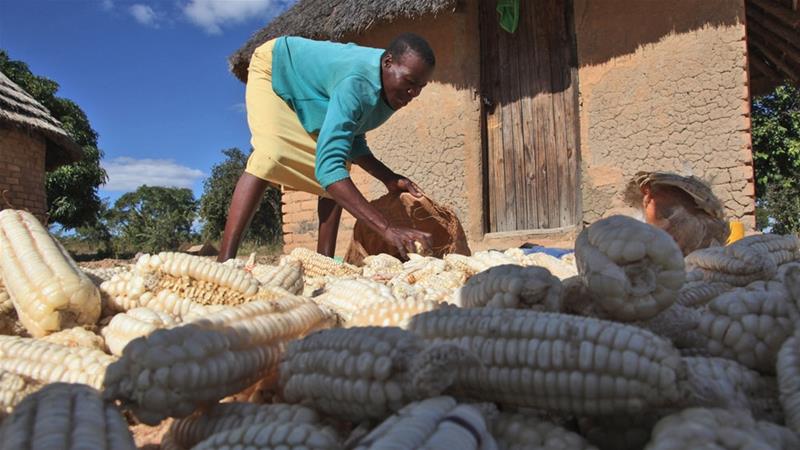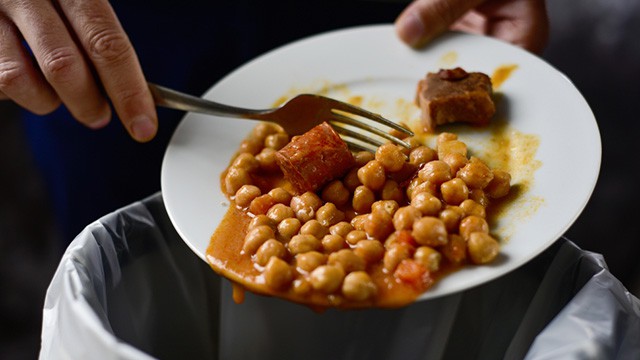
Food prices rose to a 10-year high last month, hitting peak since July 2011 and extending the 30% increase recorded last year, according to a Food and Agriculture Organization (FAO) report. The surge was led by increases in cereal crops like wheat and vegetable oils.
The FAO Food Price Index, which tracks the international prices of food commodities, is up 3.9 per cent from September, rising for a third consecutive month.
Cereal Prices
Cereal prices overall increased by 3.2 per cent, with wheat rising 5 per cent, due to reduced harvests in major exporting nations, including Canada, Russia and the U.S. Prices of all other major cereals also increased.
Vegetable Oil, Dairy
The vegetable oil index went up 9.6 per cent, hitting an all-time high, and dairy rose by 2.6 points, with increased demand for butter, skimmed milk powder and whole milk powder, as buyers try to replenish low stocks. By contrast, cheese prices remained stable.
Meat
For the third consecutive month, the meat index declined, amid reduced purchases of pork products from China, and a sharp decline in beef from Brazil. Poultry and sheep prices rose.
Sugar
After six consecutive monthly increases, sugar prices also dropped, by 1.8 per cent, amidst limited global demand and large surpluses for export.
Record cereal output
Compared to last year, global cereal production for 2021, is anticipated to increase and reach a new record level, of some 2,793 million tonnes.
World cereal consumption for 2021/22 is heading towards a 1.7 per cent gain, led by an anticipated increase in global food consumption of wheat, rising in tandem with a growing global population.
Global Food Import Bill To Reach “Record High” In 2021
Global food trade has accelerated and is poised to hit a record in volume and value terms, according to a new FAO report.
FAO expects the global food import bill to reach an all-time high in 2021 and surpass US$1.75 trillion, marking a 14% increase from the previous year and 12% higher than the earlier forecast in June 2021.
The increase is driven by higher price levels of internationally traded food commodities and a threefold increase in freight costs.
Global food trade has shown resilience to disruptions throughout the COVID-19 pandemic. Still, rapidly rising food commodities and energy prices pose significant challenges for poorer countries and consumers, who spend large shares of their incomes on these basic necessities, FAO says in its new Food Outlook.
Developing regions account for 40% of the total, and their aggregate food import bill is expected to rise by 20% compared to 2020.
Even faster growth is expected for Low-Income Food Deficit Countries due to higher costs more than higher food import volumes.
Staples rise
Developing regions face sharp increases in the prices of basic staples such as cereals, animal fats, vegetable oils and oilseeds, while high-value foods, such as fruits and vegetables, fishery products and beverages, are driving the bulk of the increases for developed regions.
Issued twice a year, Food Outlook offers FAO’s reviews of market supply and demand trends for the world’s major foodstuffs, including cereals, vegetable oils, sugar, meat and dairy and fish. It also looks at trends in futures markets and shipping costs for food commodities.
Fisheries and aquaculture output in 2021 is forecast to grow by 2.0% from the 2020 level, signaling that new market dynamics resulting from the pandemic – which exacted a heavy toll on this sector – appear likely to endure in the long term. Fish trade is bouncing back despite high freight costs and logistical delays.
Agricultural Input Prices
FAO experts constructed a Global Input Price Index (GIPI) to help examine the impacts of rapidly rising input prices, especially energy derived from fossil fuels, on food prices, future price developments and their likely consequences for global food security.
The exercise reveals that the GIPI – comprising energy, fertilizers, pesticides, feed and seed prices – and the FAO Food Price Index (FFPI) – which tracks the internationally traded prices of major agricultural food commodities and reached a 10-year high in August 2021 – have moved in a synchronous manner since 2005, indicating that higher input costs readily translate into higher food prices.
In the year to August 2021, the FFPI rose by 34%, and the GIPI increased overall by 25%, compared to the same period in 2020.
It was noted that aggregate global measures mask large regional and sector-specific differences within agriculture. Soybean producers, for example, face lower needs of currently expensive nitrogen fertilizer, so they should benefit from higher product prices.
Pig producers, by contrast, face high feed costs and low meat prices, crimping margins.
Breaking down silos
The publication also provides recommendations that include better data collection to guide renewable energy investments, improved access to finance, and a greater focus on raising awareness and building capacity.
Not only do a third of agri-food emissions stem from energy use (fuel for farm machinery for example), that number grew 20 per cent rise between 2000 and 2018.
According to the report, that growth has been mainly driven by mechanization in Asia, such as irrigation pumps, farm machinery, processing equipment and inputs such as fertilizers.
Africa
Energy use in Africa, which hosts around 15 per cent of the global population, has remained largely constant, and only accounts for about 4 per cent of the global consumption.
The report is the result of a joint effort between FAO and the International Renewable Energy Agency (IRENA).
Food and climate
The production, distribution and consumption of all this food, uses about a third of the world’s total energy, according to a new report, which was launched on the sidelines of the UN’s Climate Change Conference (COP26) in Glasgow.
The report, Renewable energy for agri-food systems – Towards the Sustainable Development Goals and the Paris Agreement, shares several examples of how that can be accomplished.
Solar irrigation, for example, can improve access to water, enabling multiple cropping cycles and increasing resilience to changing rainfall patterns.
In India, the use of solar irrigation pumps has raised farmers’ incomes by at least 50 per cent compared to when rain was the only option. In Rwanda, smallholder farmers’ yields have grown by about a third.
In a video message, FAO Director-General, Qu Dongyu, argued that the report “shows that there are many opportunities to implement renewable energy solutions across agri-food systems.”












































